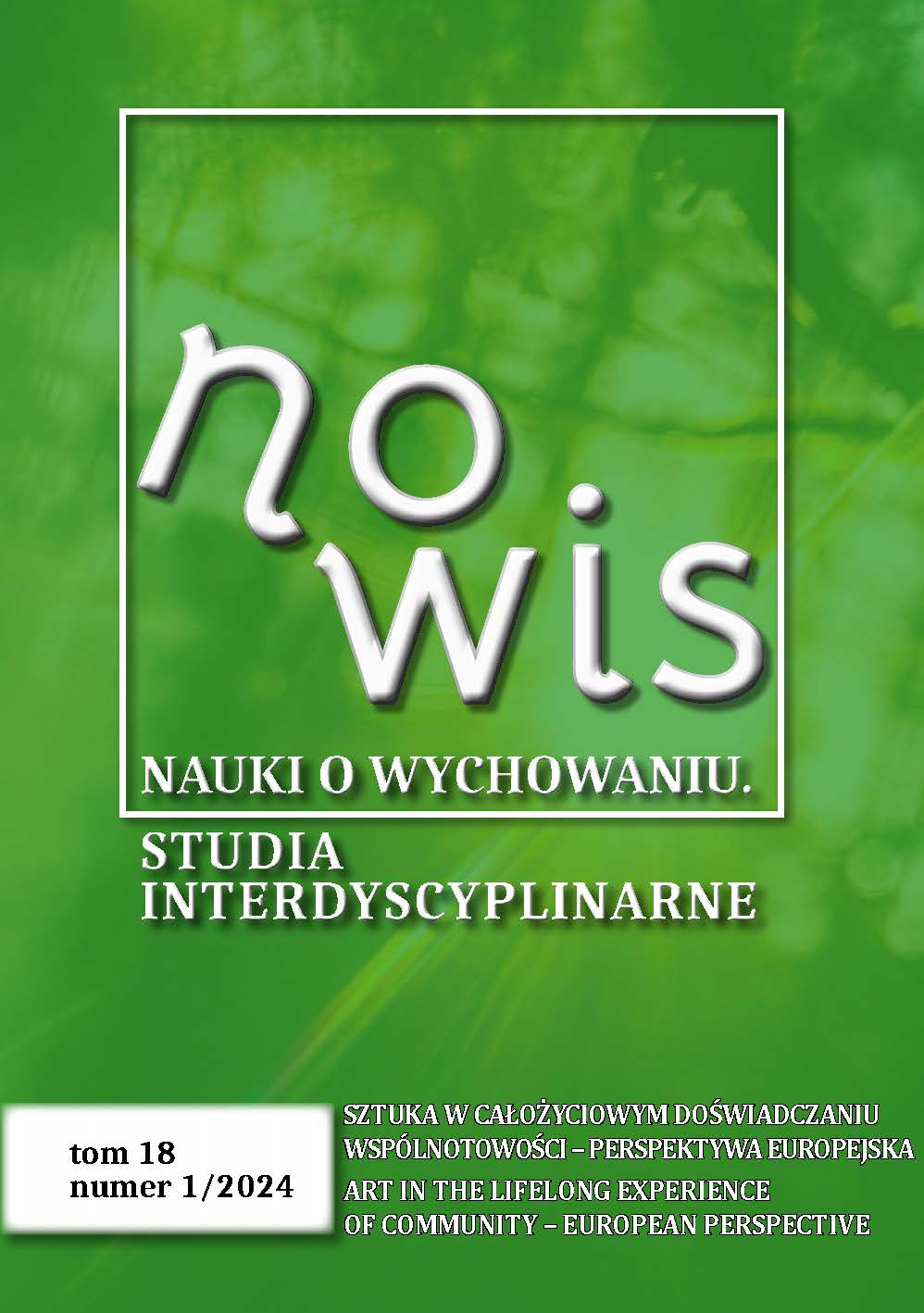On Laughter and Its Community Functions in Social Life and Art. Considerations From an Anthropological and Pedagogical Perspective
DOI:
https://doi.org/10.18778/2450-4491.18.06Keywords:
art, community, comedy, laughter, educationAbstract
The aim of the study which adopts an anthropological and pedagogical perspective is to reflect on the community functions of art that uses comedy eliciting laughter. The subject of interest is therefore comedy-related laughter perceived as a socio-cultural phenomenon. The article examines various forms of comedy that cause laugher, and discusses their conditions and transformations. Selected examples from the field of art (literature, theater, film, visual arts) are used for exemplification. The considerations presented in the text arose from the questions about the reasons for the marginal interest in comedy and laughter, including in its community functions, in the theory of aesthetic education and in the contemporary discourse of art pedagogy.
References
Bachtin M. (1975) Twórczość Franciszka Rabelais’go a kultura ludowa średniowiecza i renesansu, trans. A. & A. Goreniowie, Warszawa, Wydawnictwo Literackie.
Google Scholar
Bergson H. (1995) Śmiech. Esej o komizmie, trans. S. Cichowicz, Warszawa, Wydawnictwo KR.
Google Scholar
Desgagnes P. (2008) Śmiech to zdrowie. Terapia śmiechem, trans. A. Ciepłowska, Warszawa, Bauer-Weltbild Media.
Google Scholar
Dudzikowa M. (1996) Osobliwości śmiechu uczniowskiego, Kraków, Oficyna Wydawnicza Impuls.
Google Scholar
Dziemidok B. (1967) O komizmie, Warszawa, Wydawnictwo Książka i Wiedza.
Google Scholar
Kołakowski L. (2000) Mini wykłady o maxi sprawach, series 1–3, Kraków, Społeczny Instytut Wydawniczy Znak.
Google Scholar
Krasicki I. (1985) Monachomachia czyli wojna mnichów, Warszawa, Krajowa Agencja Wydawnicza.
Google Scholar
Kwiatkowska-Tybulewicz B. (2016) Wychowawcze aspekty sztuki współczesnej. Z perspektywy sztuki współczesnej, Warszawa, Wydawnictwa Uniwersytetu Warszawskiego, https://doi.org/10.31338/uw.9788323524069
Google Scholar
DOI: https://doi.org/10.31338/uw.9788323524069
Łukaszewicz R. M. (2021) Opowieści drogi. Wrocławska Szkoła Przyszłości i Fundacja Wolne Inicjatywy Edukacyjne, czyli Każdy więcej może, mniej musi, dobre nie wystarcza, gdy lepsze jest możliwe, Wrocław, Fundacja Wolne Inicjatywy Edukacyjne.
Google Scholar
Michalski R. (2015) Rozważania wokół platońskiej koncepcji śmiechu, “Studia z Historii Filozofii”, vol. 4(6), pp. 149–174, https://doi.org/10.12775/szhf.2015.056
Google Scholar
DOI: https://doi.org/10.12775/szhf.2015.056
Plessner H. (2004) Śmiech i płacz. Badania nad granicami ludzkiego zachowania, Kraków, Wydawnictwo ANTYK.
Google Scholar
Rawski T. (2016) Śmiech a władza, “Przegląd Politologiczny”, vol. 41, pp. 240–258.
Google Scholar
Szuman S. (2008) Wybór pism estetycznych, M. Kielar-Turska (ed.), Kraków, Wydawnictwo Universitas.
Google Scholar
Wichowska J. (2006) Ptaki nad miastem, “Didaskalia. Gazeta Teatralna”, vol. 71, pp. 98–100.
Google Scholar
Wojnar I. (1968) Nauczyciel i wychowanie estetyczne, Warszawa, PZWS.
Google Scholar
Wojnar I. (1984) Teoria wychowania estetycznego, Warszawa, Państwowe Wydawnictwo Naukowe.
Google Scholar
Wojtaszak K. (2014) Śmiech, komizm, śmiechoterapia, “Przegląd Biblioterapeutyczny”, vol. IV(2), pp. 33–47.
Google Scholar
Ziomek J. (2000) Rzeczy komiczne, Poznań, Wydawnictwo “Poznańskie Studia Polonistyczne”.
Google Scholar
Żygulski K. (1985) Wspólnota śmiechu, Warszawa, Państwowy Instytut Wydawniczy.
Google Scholar






 The journal's website, created and edited by the NOWiS Editorial Team on the Index Copernicus platform:
The journal's website, created and edited by the NOWiS Editorial Team on the Index Copernicus platform: 





